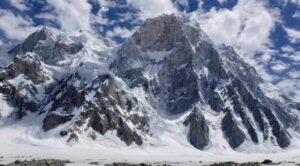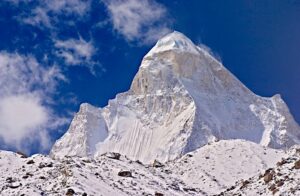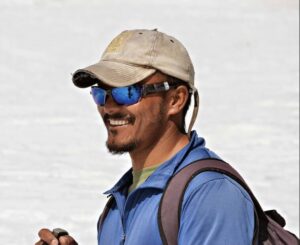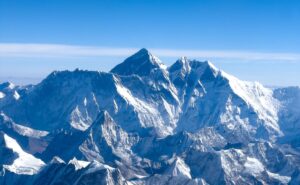Lots of oxygen, little acclimatization: How will teams fare in the critical days ahead?
Barely over a week after flying into Base Camp, climbers on commercial expeditions to Annapurna are leaving for the summit, following a strategy that minimizes the time spent on the dangerous route but which requires widespread use of oxygen.

Mingma Gyalje, aka Mingma G, leads the Annapurna summit push. Photo: Mingma G
The rope-fixing team reached Camp 3 a few days ago and returned to BC. Today, they have left BC again for Camp 2, while some climbers have headed for Camp 1. Others will climb all the way to Camp 2 tomorrow.
Imagine Nepal leader and recent winter K2 summiter Mingma G outlined the blueprint the next few days:
“On April 11, the Sherpa team will go to Camp 3 and back to Camp 2, and the [clients] will climb to Camp 2. On April 12, all team members will climb to Camp 3, and the Sherpa team will continue fixing [to] Camp 4. On April 13, all teams will climb to Camp 4 and the Sherpa team will continue fixing halfway to the summit. April 14 is Nepal’s New Year, 01-01-2078, and on this auspicious day, the team will make Annapurna summit.”

Viridiana Alvarez on rappel after her rotation to Camp 2.
The challenge lies mainly in their lack of acclimatization and short rotations, Viridiana Alvarez of Mexico points out. Most clients have only made a rotation to C1 and another to C2, in order to avoid the most avalanche-prone section, between Camp 2 and Camp 3.
That section is also “the most technical, with blue ice walls and steep rock faces,” Kamran Ali reported from Base Camp. “Overhanging seracs are a major threat in this section.”
In recent years, Annapurna is usually climbed as fast and as early in the season as possible, before temperatures rise and increase the avalanche hazard. However, a summit push without previous acclimatization and no previous experience with the complex route above Camp 2 only makes sense with plenty of fixed ropes and oxygen.
Earlier this week, Antonios Sykaris mentioned that the 12-man Sherpa team found the Dutch Rib route blocked by a collapsed serac near Camp 3. He said that that they would try “the old dangerous way to the left”, although it is unclear if he meant the classic French route or the German variation.

Sirbaz Khan of Pakistan. He and Abdul Joshi are the only non-Nepalis to have already reached Camp 3. Photo: Kamran On Bike
Seemingly, the best-prepared on the Imagine Nepal team are Pakistani climbers Sirbaz Khan and Abdul Joshi. They have been on the mountain longer and were already at Camp 1 when the others flew into BC. They have even reached and left a gear deposit at Camp 3.
“This is a route that you would want to only do once,” Joshi said back in Base Camp. “Seracs are looming right above your head, ready to fall anytime.”
Their partner, Kamran Ali, recently asked Mingma G which was the most difficult mountain he had ever climbed. “Annapurna, because it has a different type of ice,” the Sherpa replied.
Annapurna, the old style
The use of O2 on Annapurna and the rest of “lower” 8,000’ers is relatively new, as Juan Oiarzabal explained earlier this week to ExplorersWeb. He described the route based on his own two successful climbs without O2.
“It varies with the team, but usually Camp 1, set at about 5,600m, is only used for a first rotation. Then climbers usually skip it and go all the way to Camp 2. Nowadays, teams rarely follow the original 1950 French route next to the distinctive sickle-shaped cliff. The French followed that route because they thought it was the most direct, but most expeditions usually pick either the so-called German route or the Dutch Rib.”

The German route, a variation of the Dutch Rib. Photo: Ferran Latorre
The most dangerous, avalanche-prone zone lies between Camp 2 and Camp 3. The route reaches crosses a huge plateau toward the face, right below the overhanging seracs along the so-called Sickle.
“That is hazardous because of serac fall,” Oiarzabal said. “However, the most common danger comes next, as one gets closer to the wall and heads toward a characteristic cone-shaped couloir, with a great serac on top. This serac is usually loaded with snow, and pieces of it break and fall off from time to time.”
As the serac pieces fall down the cone, they trigger big, impressive, yet not-so-lethal powder avalanches.
“It looks like the whole mountain falling down on you,” the Basque climber said. “When we were at the plateau, sooner or later we would have to run towards left or right and try to protect ourselves; we knew that most of it was snowdrift, but there were always chunks of ice in the snow.

The plateau and the wall crowned by hanging seracs, seen from C2. Photo: Purnima Shrestha
At the bergschrund at the base of the wall, the route climbs up and left, then surmounts a spur, which takes climbers beyond the powder snow avalanches. From the spur, the route keeps going up some of the most technical sections of the route. These are 45º to 55º steep ramps, with some short 70º sections, requiring great effort in order to reach Camp 3.
“From Camp 3 to Camp 4, there is a serac barrier to overcome and then a passage on top of a cliff,” recalls Oiarzabal. “Navigation is hard in that maze of crevasses. There is also a large bergschrund to cross.”
He adds: “From Camp 4 to the summit, the route goes along the obvious passage for a while, until right below the summit ridge. Once there, there are two options: Follow the German route or change to the original French route.
“Both involve long climbs up a slope averaging 40º to 45º. If you take the original French route, you need to traverse horizontally to 7,800m, in order to get to the upper sections of the original route. At first, it is okay but on the upper slopes, the climb gets rather technical and exposed.
“Or you can follow the German route to the col, between the main summit and the eastern summit, and then take the summit ridge to the main summit. This is less technical but longer.”






